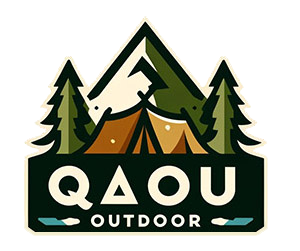How Outdoor Education Offers a Natural Alternative to Screen-Based Learning
In an increasingly digital world, education has become more reliant on screens than ever before. From remote learning to AI-driven tutoring, students spend hours in front of computers—often at the expense of hands-on experiences. However, a growing movement is advocating for a return to nature-based education, arguing that outdoor learning provides benefits that go beyond what screens can offer.
As concerns over e-proctoring, privacy, and digital burnout continue to rise, outdoor education is emerging as a compelling alternative, fostering critical thinking, resilience, and a deep connection with the environment. Here’s how outdoor learning is reshaping education and why it might just be the future of immersive, real-world teaching.
The Downsides of Digital-Only Learning
Screen-based education offers convenience, but it also comes with challenges. E-proctoring software, designed to monitor students during online exams, has been criticized for violating privacy and causing undue stress. Beyond privacy concerns, digital learning environments often contribute to:
- Screen fatigue – Increased screen time leads to eye strain, reduced attention spans, and mental exhaustion.
- Lack of hands-on engagement – Many subjects, especially science, art, and physical education, lose their tactile learning opportunities.
- Reduced social interaction – Remote learning limits real-world communication and teamwork skills.
- Disconnection from nature – A sedentary, indoor lifestyle can contribute to mental and physical health issues.
As a result, educators and parents are looking to outdoor education programs as a powerful antidote to the drawbacks of screen-based learning.

What is Outdoor Education?
Outdoor education refers to learning experiences that take place in nature, focusing on exploration, teamwork, and hands-on skills. Unlike traditional classroom settings, outdoor education:
- Encourages experiential learning, allowing students to interact directly with their environment.
- Fosters resilience and problem-solving through real-world challenges.
- Promotes physical activity, improving overall well-being.
- Reduces stress and enhances focus through exposure to natural surroundings.
These programs range from forest schools for young children to survival training for adults, with an increasing number of institutions recognizing the academic, emotional, and physical benefits of learning in nature.
The Rise of Outdoor Schools and Programs
Forest Schools: Nature-Based Learning for Kids
Forest schools, originally popularized in Scandinavia, provide children with structured outdoor learning environments where they explore forests, build shelters, and engage in problem-solving activities. Studies show that children who attend forest schools develop better social skills, resilience, and cognitive flexibility compared to their peers in traditional classrooms.
Survival & Bushcraft Training for Teenagers and Adults
Programs such as Outward Bound and NOLS (National Outdoor Leadership School) offer immersive outdoor education for teens and adults. These programs emphasize:
- Survival skills (fire-making, navigation, shelter-building)
- Leadership and teamwork in extreme conditions
- Self-reliance and decision-making in unpredictable environments
Participants emerge with practical knowledge that applies beyond the wilderness, including better critical thinking and adaptability in everyday life.
Eco-Learning & Environmental Education
Outdoor education isn’t just about survival—it also plays a key role in teaching conservation and sustainability. Programs like Earthwatch Institute and The Sierra Club run hands-on environmental education projects, allowing students to:
- Study local ecosystems and wildlife.
- Learn sustainable living practices.
- Participate in conservation efforts such as reforestation or marine preservation.
By replacing abstract textbook concepts with real-world applications, these programs create stronger connections between students and the environment.

Outdoor Learning vs. E-Proctoring: A Healthier Alternative?
Privacy concerns and the stress of online learning have fueled discussions about whether screen-based education is truly beneficial in the long term. Unlike e-proctoring, which relies on AI surveillance and high-stakes testing, outdoor education focuses on:
- Mastery over memorization – Hands-on experiences promote deeper learning, unlike rote memorization tested in online exams.
- Collaboration over isolation – Group-based outdoor learning fosters teamwork and real-world problem-solving.
- Intrinsic motivation – Exploring the outdoors naturally engages curiosity, making learning more enjoyable and meaningful.
As a result, many schools and universities are incorporating outdoor education into their curricula to counterbalance excessive screen time.
How Outdoor Learning Prepares Students for the Future
One of the biggest critiques of traditional education is that it fails to prepare students for real-life challenges. Outdoor education, on the other hand, teaches skills that are directly applicable to a range of careers and lifestyles, including:
- STEM fields – Environmental science, geology, and biology all benefit from hands-on outdoor research experience.
- Resilience & adaptability – Outdoor challenges teach students to stay calm under pressure and solve problems on the go.
- Mental health & well-being – Nature exposure has been linked to reduced anxiety, improved mood, and enhanced cognitive performance.
As workplaces evolve and employers seek individuals with critical thinking, leadership, and adaptability, outdoor learning offers an unconventional but effective path toward success.
Final Thoughts
With concerns over privacy, screen fatigue, and disengaged learning on the rise, outdoor education provides a compelling alternative to traditional, screen-heavy methods. From forest schools for young children to leadership-focused wilderness programs, outdoor education reconnects students with the world beyond their screens.
As we navigate the future of education, integrating outdoor learning into mainstream curriculums could be key to developing well-rounded, resilient, and environmentally conscious individuals. In a world dominated by digital tools, the outdoors remains one of the most powerful classrooms available.








